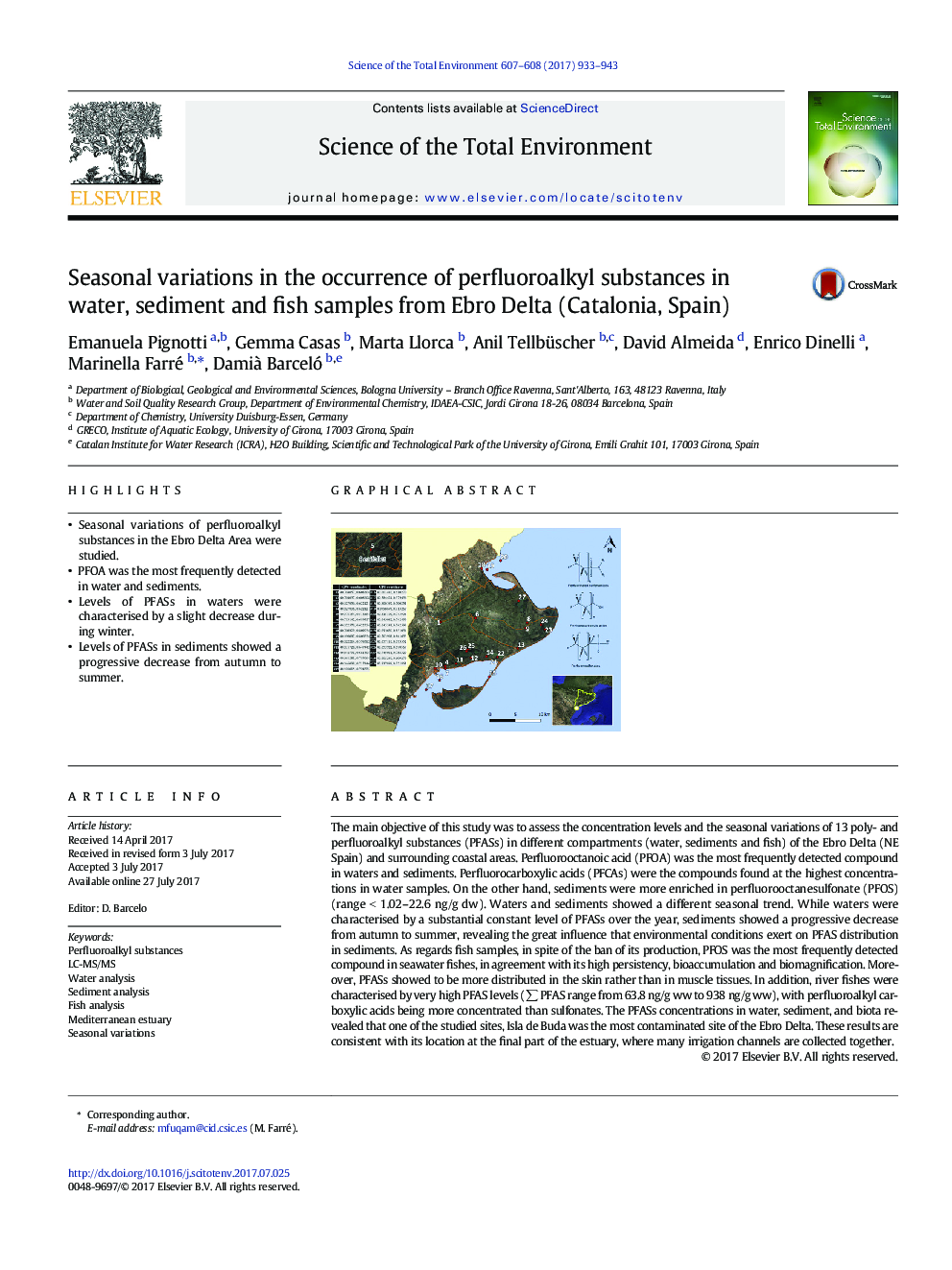| Article ID | Journal | Published Year | Pages | File Type |
|---|---|---|---|---|
| 5750051 | Science of The Total Environment | 2017 | 11 Pages |
â¢Seasonal variations of perfluoroalkyl substances in the Ebro Delta Area were studied.â¢PFOA was the most frequently detected in water and sediments.â¢Levels of PFASs in waters were characterised by a slight decrease during winter.â¢Levels of PFASs in sediments showed a progressive decrease from autumn to summer.
The main objective of this study was to assess the concentration levels and the seasonal variations of 13 poly- and perfluoroalkyl substances (PFASs) in different compartments (water, sediments and fish) of the Ebro Delta (NE Spain) and surrounding coastal areas. Perfluorooctanoic acid (PFOA) was the most frequently detected compound in waters and sediments. Perfluorocarboxylic acids (PFCAs) were the compounds found at the highest concentrations in water samples. On the other hand, sediments were more enriched in perfluorooctanesulfonate (PFOS) (range < 1.02-22.6 ng/g dw). Waters and sediments showed a different seasonal trend. While waters were characterised by a substantial constant level of PFASs over the year, sediments showed a progressive decrease from autumn to summer, revealing the great influence that environmental conditions exert on PFAS distribution in sediments. As regards fish samples, in spite of the ban of its production, PFOS was the most frequently detected compound in seawater fishes, in agreement with its high persistency, bioaccumulation and biomagnification. Moreover, PFASs showed to be more distributed in the skin rather than in muscle tissues. In addition, river fishes were characterised by very high PFAS levels (â PFAS range from 63.8 ng/g ww to 938 ng/g ww), with perfluoroalkyl carboxylic acids being more concentrated than sulfonates. The PFASs concentrations in water, sediment, and biota revealed that one of the studied sites, Isla de Buda was the most contaminated site of the Ebro Delta. These results are consistent with its location at the final part of the estuary, where many irrigation channels are collected together.
Graphical abstractDownload high-res image (336KB)Download full-size image
